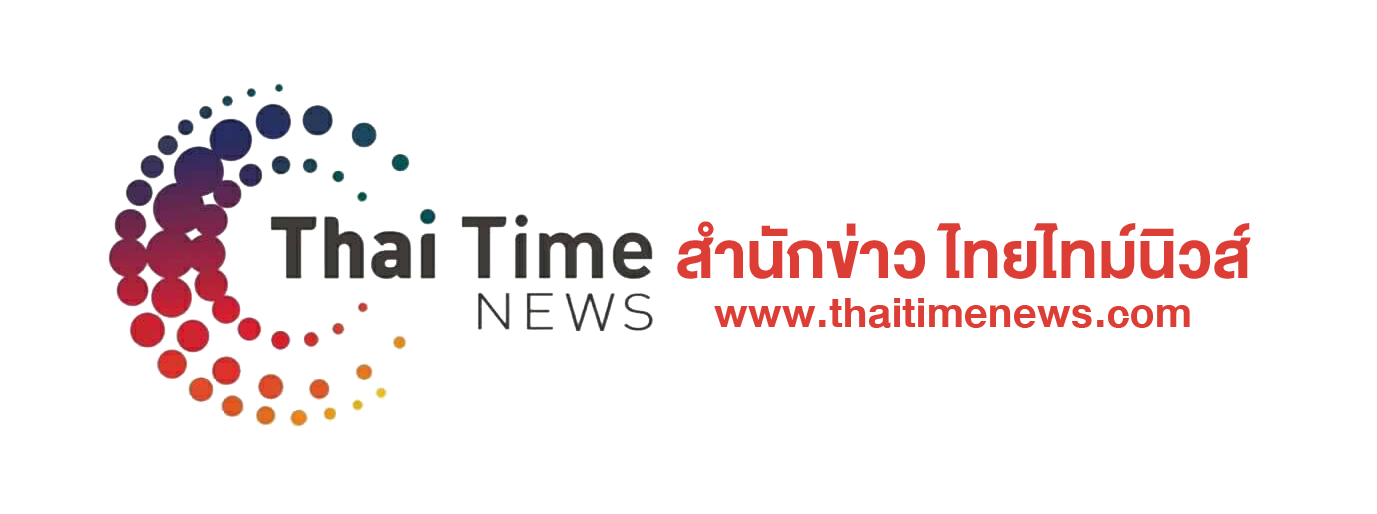โดย : ดร.ยรรยง ไทยเจริญ
รองผู้จัดการใหญ่อาวุโส ประธานเจ้าหน้าที่บริหารกลุ่มงาน Economic Intelligence Center ธนาคารไทยพาณิชย์ จำกัด (มหาชน)
EIC ปรับลดประมาณการเศรษฐกิจไทยปี 2564 ลงเหลือ 0.7% จากเดิมคาดไว้ที่ 0.9% ตามการระบาดในประเทศระลอกที่สามที่รุนแรงและยืดเยื้อ ส่งผลให้การบริโภคภาคเอกชนได้รับผลกระทบค่อนข้างมาก รวมถึงจำนวนนักท่องเที่ยวต่างชาติน้อยกว่าคาดจากความกังวลของสถานการณ์ระบาดในประเทศ ทั้งนี้คาดว่าสถานการณ์จะทยอยปรับดีขึ้นในช่วงต้นไตรมาส 4 ปีนี้ จากอัตราการฉีดวัคซีนครบโดสของประชากรที่เพิ่มขึ้นอย่างมีนัยสำคัญ ซึ่งจะส่งผลดีต่อความเชื่อมั่นและการฟื้นตัวของกิจกรรมเศรษฐกิจในประเทศ ขณะที่การส่งออกสินค้ายังขยายตัวได้ต่อเนื่อง แต่คาดว่าในช่วงที่เหลือของปี จะมีทิศทางชะลอลงบ้างทั้งจากฐานที่ปรับสูงขึ้น และผลกระทบของการระบาดสายพันธุ์เดลตาทั่วโลกที่ทำให้เศรษฐกิจโลกชะลอตัวและเกิด Supply disruption ในหลายห่วงโซ่การผลิตของภาคอุตสาหกรรมของไทยและกลุ่มประเทศกำลังพัฒนาในอาเซียน ในส่วนของภาครัฐ ยังมีการอัดฉีดเม็ดเงินเข้าเศรษฐกิจต่อเนื่องทั้งจากการใช้จ่ายอุปโภคบริโภคและการลงทุนภาครัฐ รวมถึงมาตรการพยุงเศรษฐกิจหลายประเภท อย่างไรก็ตาม มาตรการที่ออกมาล่าสุดยังไม่เพียงพอทั้งในมิติเชิงพื้นที่ ระยะเวลา และจำนวนเงิน โดย EIC คาดว่าภาครัฐจะออกมาตรการพยุงเศรษฐกิจเพิ่มเติมในปีนี้ โดยจะเป็นการใช้เม็ดเงินในส่วนที่เหลือจาก พรก. กู้เงิน 1 ล้านล้านบาท และเพิ่มเติมอีก 2 แสนล้านบาท
จาก พรก. กู้เงิน 5 แสนล้านบาทสำหรับปี 2565 EIC คาดเศรษฐกิจไทยมีแนวโน้มเติบโตที่ 3.4% โดยจะเป็นการฟื้นตัวจากทั้งอุปสงค์ภายในและนอกประเทศ เริ่มจากการส่งออกสินค้ายังมีแนวโน้มขยายตัวแม้ในอัตราที่ชะลอลงตามทิศทางเศรษฐกิจโลก ขณะที่อัตราการฉีดวัคซีนของไทยและประเทศต่าง ๆ ในเอเชียที่จะเพิ่มขึ้นในระดับที่สามารถเอื้อให้เกิดการเดินทางระหว่างประเทศได้สะดวกขึ้น จะส่งผลดีต่อการฟื้นตัวของภาคท่องเที่ยว โดยคาดว่าจะมีนักท่องเที่ยวต่างชาติเดินทางเข้าไทยราว 6.3 ล้านคน นอกจากนี้ การใช้จ่ายในประเทศก็จะฟื้นตัวเช่นกันจากกิจกรรมเศรษฐกิจที่จะกลับมาดำเนินการได้ใกล้เคียงกับภาวะปกติอีกครั้ง อย่างไรก็ดี การฟื้นตัวจะเป็นไปอย่างช้า ๆ จากระดับนักท่องเที่ยวที่ยังต่ำกว่าช่วงปกติมาก และผลของแผลเป็นเศรษฐกิจที่ลึก
จากผลกระทบในช่วงสองปีที่ผ่านมาทั้งในด้านพลวัตการเปิดปิดกิจการที่ปรับแย่ลง ตลาดแรงงานที่เปราะบาง และภาระหนี้ที่อยู่ในระดับสูง ในส่วนของภาครัฐ แม้ด้านการลงทุนโครงการภาครัฐจะยังขยายตัวได้ต่อเนื่องจากการลงทุนของรัฐวิสาหกิจและการร่วมลงทุนระหว่างภาครัฐและภาคเอกชน (PPP) แต่แรงส่งจากภาครัฐในภาพรวมจะลดลงจากปีก่อนหน้าตามการใช้จ่ายอุปโภคบริโภคของภาครัฐภายใต้กรอบงบประมาณที่ลดลง รวมถึงเม็ดเงินราว 3 แสนล้านบาทที่จะเหลือจาก พรก. กู้เงิน 5 แสนล้านบาท ก็ถือว่ายังน้อยกว่าเม็ดเงินที่ภาครัฐใช้ทำมาตรการเพิ่มเติมในปี 2564 ทั้งนี้แม้ว่าเศรษฐกิจจะฟื้นตัวได้ในปีหน้า แต่ก็ยังเป็นการฟื้นตัวอย่างช้า ๆ และยังต่ำกว่าระดับศักยภาพค่อนข้างมาก ทำให้มีความสูญเสียทางเศรษฐกิจ (output loss) ในระดับสูงและอาจกระทบต่อศักยภาพการขยายตัวของเศรษฐกิจไทยในอนาคต โดยกว่าเศรษฐกิจไทยจะกลับไปอยู่ในระดับปี 2562 จะต้องรอถึงช่วงกลางปี 2566 ดังนั้น ภาครัฐจึงควรพิจารณากู้เงินเพิ่มเติมเพื่อสนับสนุนการฟื้นฟูและการปรับโครงสร้างเศรษฐกิจไทย โดยแม้ระดับหนี้สาธารณะจะปรับสูงขึ้นกว่าเพดานหนี้ที่ 60% ต่อ GDP แต่ยังอยู่ในวิสัยที่ภาครัฐจะสามารถบริหารจัดการได้ในภาวะดอกเบี้ยต่ำและสภาพคล่องในประเทศที่อยู่ในระดับสูง โดยภาครัฐต้องสื่อสารถึงแผนการลดระดับหนี้ในระยะปานกลางที่น่าเชื่อถือ เพื่อสร้างความเชื่อมั่นต่อเสถียรภาพการคลัง
ด้านนโยบายการเงิน คาดว่า คณะกรรมการนโยบายการเงินจะคงอัตราดอกเบี้ยนโยบายที่ 0.5% ตลอดปี 2564 และ 2565 เพื่อสนับสนุนการฟื้นตัวของเศรษฐกิจ โดยธนาคารแห่งประเทศไทยจะให้น้ำหนักกับการเพิ่มประสิทธิภาพการส่งผ่านนโยบายการเงินผ่านมาตรการทางการเงินต่าง ๆ เพื่อกระจายสภาพคล่องไปยังภาคครัวเรือนและภาคธุรกิจ SME ให้มากขึ้น ควบคู่กับการสนับสนุนการปรับโครงสร้างหนี้ของสถาบันการเงินให้สอดคล้องกับปัญหาของลูกหนี้แต่ละกลุ่มมากยิ่งขึ้น รวมทั้งพิจารณาเข้าดูแลอัตราดอกเบี้ยในตลาดการเงินหากเกิดความผันผวนตามภาวะการเงินโลกที่อาจตึงตัวขึ้น
ทั้งนี้เศรษฐกิจไทยยังมีความเสี่ยงด้านต่ำที่สำคัญจาก 1) การระบาด COVID-19 ทั้งในไทยและต่างประเทศที่อาจกลับมารุนแรงอีกครั้ง โดยเฉพาะหากมีการกลายพันธุ์ของไวรัสที่ลดประสิทธิภาพวัคซีนลง 2) ปัญหาด้าน Supply chain disruption ที่อาจเกิดขึ้นจากทั้งการปิดโรงงานในประเทศ และการหยุดการผลิตในประเทศคู่ค้าที่อยู่ในห่วงโซ่การผลิตเดียวกัน และ 3) ผลของแผลเป็นเศรษฐกิจที่อาจมีมากกว่าคาด จนกระทบต่อความสามารถในการชำระหนี้ของภาคครัวเรือนและภาคธุรกิจในวงกว้าง
การขยายตัวของเศรษฐกิจโลกได้ผ่านจุดสูงสุดไปในไตรมาส 2 ปีนี้ แต่การฟื้นตัวของแต่ละภูมิภาคยังมีความแตกต่างอยู่มาก ขึ้นอยู่กับความสามารถในการควบคุมการระบาด ความเร็วของการฉีดวัคซีน และขนาดของมาตรการภาครัฐเป็นสำคัญ EIC ประเมินเศรษฐกิจโลกในปี 2564 และ 2565 จะขยายตัว 6.0% และ 4.6% ตามลำดับ โดยการฟื้นตัวของเศรษฐกิจในช่วงที่เหลือของปีนี้ต่อเนื่องถึงปีหน้ามีแนวโน้มชะลอลงจากช่วงต้นไตรมาสที่สาม เนื่องจากเศรษฐกิจของกลุ่มประเทศพัฒนาแล้วที่สำคัญส่วนใหญ่ได้มีการเปิดเมืองไปแล้ว ทำให้ pent up demand เร่งตัวไปในช่วงปลายไตรมาสที่สองและต้นไตรมาสที่สามของปีนี้ อีกทั้งการแพร่ระบาดของไวรัสสายพันธุ์เดลตายังส่งผลต่อภาคบริการ ทำให้การขยายตัวปรับชะลอลงในช่วงสองเดือนล่าสุด นอกจากนี้ มาตรการภาครัฐที่ได้ดำเนินการไปเพื่อสนับสนุนการฟื้นตัวทางเศรษฐกิจจะทยอยหมดอายุลงในช่วงไตรมาสที่สี่ปีนี้
ส่วนมาตรการที่จะถูกนำมาสานต่อ เช่น US Bipartisan Infrastructure Bill และโครงการจาก EU Recovery fund ก็จะมีเม็ดเงินอัดฉีดต่อปีในขนาดที่เล็กลงเมื่อเทียบกับในช่วงสองปีที่ผ่านมา ขณะที่การฟื้นตัวของกลุ่มประเทศเศรษฐกิจเกิดใหม่ (EM) ซึ่งรวมถึงภูมิภาคเอเชียแปซิฟิก ส่วนใหญ่จะยังมีอัตราที่ต่ำกว่าตามอัตราการฉีดวัคซีนเป็นไปอย่างช้า ๆ ภายใต้ภาวะที่ต้องเผชิญกับการแพร่ระบาดของไวรัสสายพันธุ์เดลตา ทำให้ภาครัฐของหลายประเทศต้องกลับมาบังคับใช้มาตรการควบคุม (lockdown) ที่เข้มงวดขึ้นอีกครั้ง รวมทั้งปัญหา supply disruption จากการปิดโรงงานอุตสาหกรรมในหลายประเทศ นอกจากนี้ มาตรการช่วยเหลือของภาครัฐยังมีขนาดที่เล็กกว่าตามข้อจำกัดเชิงนโยบาย
ความแตกต่างของการฟื้นตัวทางเศรษฐกิจจะทยอยลดลงในปี 2565 จากแนวโน้มการกระจายวัคซีนในกลุ่มประเทศเศรษฐกิจเกิดใหม่ที่จะมีมากขึ้น และปัญหา supply bottleneck ที่จะทยอยคลี่คลายลง โดยอัตราการฉีดวัคซีนที่สูงขึ้นจะทำให้กลุ่มประเทศเศรษฐกิจเกิดใหม่สามารถทยอยเปิดเมืองได้มากขึ้น ซึ่งจะเป็นแรงสนับสนุน pent up demand ให้ปรับสูงขึ้นได้ นอกจากนี้ ปัญหา supply chain disruption ที่กดดันภาคการผลิตทั่วโลกโดยเฉพาะในกลุ่มประเทศเศรษฐกิจเกิดใหม่และเอเชีย
ก็จะทยอยคลี่คลายลง ทำให้แนวโน้มการค้าโลกโดยเฉพาะในกลุ่มประเทศเศรษฐกิจเกิดใหม่กลับมาฟื้นตัวได้ดีขึ้น สำหรับแรงกดดันเงินเฟ้อที่ปรับสูงขึ้นเร็วในช่วงที่ผ่านมานั้น EIC คาดว่าจะทยอยปรับชะลอลงได้ในปีหน้าเช่นกัน จากแนวโน้มราคาสินค้าโภคภัณฑ์ที่จะปรับชะลอลงตามปัญหาอุปทานที่คลี่คลาย การเพิ่มกำลังการผลิตนอกจีน และปัจจัยฐานต่ำที่จะทยอยหมดไป ทั้งนี้อัตราเงินเฟ้อที่ปรับสูงขึ้นทำให้ธนาคารกลางของประเทศเศรษฐกิจหลักมีแนวโน้มลดการผ่อนคลายนโยบายการเงินลงในช่วงที่เหลือของปีนี้ โดย EIC คาดว่า ธนาคารกลางสหรัฐฯ (Fed) และธนาคารกลางยุโรป (ECB) จะลดระดับการเข้าซื้อสินทรัพย์ทางการเงิน (QE taper) ในช่วงไตรมาสที่สี่ปีนี้ สำหรับอัตราดอกเบี้ยนโยบายนั้น EIC ประเมินว่า Fed อาจปรับขึ้น 2 ครั้งในปี 2566 ส่วน ECB นั้น คาดว่าจะคงอัตราดอกเบี้ยนโยบายที่ระดับปัจจุบันจนถึงปี 2568 เป็นอย่างน้อย นอกจากนี้ แรงกดดันเงินเฟ้อที่ผ่านมายังส่งผลต่อการดำเนินนโยบายการเงินของประเทศเศรษฐกิจเกิดใหม่ที่มีความเสี่ยงด้านเสถียรภาพด้านราคา โดยจำเป็นต้องปรับขึ้นอัตราดอกเบี้ยนโยบายเพื่อควบคุมเงินเฟ้อแม้เศรษฐกิจจะยังไม่ฟื้นตัวดีนัก
ด้านเศรษฐกิจไทย EIC ปรับลดประมาณการเศรษฐกิจปี 2564 เหลือ 0.7% จากเดิมที่คาดไว้ที่ 0.9% โดยมีสาเหตุหลักจากผลของการระบาดในประเทศรอบล่าสุดที่รุนแรงมากกว่าคาด ส่งผลให้จำนวนนักท่องเที่ยวมีแนวโน้มเดินทางเข้าไทยน้อยกว่าเดิมตามความกังวลที่เพิ่มขึ้นจากสถานการณ์ระบาดในประเทศ สะท้อนได้จากหลายประเทศที่มีการประกาศให้ไทยเป็นประเทศความเสี่ยงสูงด้านการระบาด COVID-19 เช่น สหรัฐฯ และสหราชอาณาจักร จึงมีการปรับลดคาดการณ์จำนวนนักท่องเที่ยวเหลือ 1.7 แสนคน (เดิมคาด 3 แสนคน) นอกจากนี้ การใช้จ่ายของภาคเอกชนก็ได้รับผลกระทบหนักจากการระบาดในประเทศและมาตรการ lockdown เช่นกัน สะท้อนจากดัชนีการบริโภคภาคเอกชนเดือนกรกฎาคมที่หดตัวถึง -8.1%YOY รวมถึงการลงทุนก่อสร้างที่ได้รับผลกระทบจากมาตรการปิดแคมป์คนงานในช่วงเดือนกรกฎาคม โดยแม้ว่าจะกลับมาดำเนินการได้แล้ว แต่มาตรการ Bubble and seal ก็ทำให้ต้นทุนการดำเนินงานสูงขึ้นและทำงานได้ไม่เต็มศักยภาพ ทั้งนี้คาดว่าผลกระทบต่อเศรษฐกิจในประเทศจากการระบาดจะมีมากสุดในช่วงไตรมาส 3 ก่อนจะเริ่มฟื้นตัวได้ในช่วงต้นไตรมาส 4 จากแนวโน้มการฉีดวัคซีนครบโดสของประชากรที่จะเพิ่มขึ้นอย่างชัดเจน เป็นผลดีต่อความเชื่อมั่นและการกลับมาดำเนินการของกิจกรรมเศรษฐกิจ อย่างไรก็ตามแม้จะมีการฟื้นตัวในช่วงไตรมาส 4 แต่ EIC ก็คาดว่า GDP ไทยในช่วงครึ่งหลังของปี จะติดลบแบบ %YOY ทั้งสองไตรมาสสะท้อนผลกระทบที่รุนแรงของการระบาดที่ยืดเยื้อต่อความเชื่อมั่นของผู้บริโภคและภาคธุรกิจ
อย่างไรก็ดี เศรษฐกิจไทยปี 2564 ยังมีปัจจัยสนับสนุนจากภาคส่งออกและเม็ดเงินภาครัฐ โดยภาคส่งออกของไทยยังมีแนวโน้มขยายตัวต่อเนื่อง แต่อัตราเติบโตจะชะลอลงในช่วงที่เหลือของปี จากฐานของปีก่อนหน้าที่สูงขึ้น ประกอบกับเศรษฐกิจโลกที่มีการสะดุดตัวจากการระบาดของสายพันธุ์เดลตาทั่วโลก โดยเฉพาะเศรษฐกิจประเทศกำลังพัฒนาในอาเซียน อีกทั้ง ปัญหาด้าน Supply chain disruption ที่อาจเกิดขึ้นจากทั้งการปิดโรงงานในประเทศ และการหยุดการผลิตในประเทศคู่ค้าที่อยู่ในห่วงโซ่การผลิตเดียวกัน ในส่วนของภาครัฐ ยังมีการเบิกจ่ายต่อเนื่องจากทั้งในงบประมาณและจากหลายมาตรการช่วยเหลือ
แต่มาตรการที่มียังไม่เพียงพอ ทั้งใน 1) เชิงพื้นที่ที่ช่วยเหลือรายได้นายจ้างและลูกจ้างเพียง 29 จังหวัดที่โดน lockdown ขณะที่ผลกระทบกระจายตัวไปยังทั่วประเทศ 2) เชิงระยะเวลาที่ช่วยเหลือรายได้เพียง 1-2 เดือน ขณะที่ผลกระทบลากยาวอย่างน้อย6 เดือนตั้งแต่เดือนเมษายน และ 3) เชิงเม็ดเงินที่มีมาตรการช่วยเหลือจากการโอนเงินโดยตรงเพียง 2 แสนล้านบาท ขณะที่EIC ประเมินผลกระทบการระบาดรอบ 3 มีมากถึง 8.5 แสนล้านบาท ดังนั้น EIC จึงคาดว่าภาครัฐจะต้องออกมาตรการเพิ่มเติมเพื่อพยุงเศรษฐกิจในช่วงที่เหลือของปี โดยจะเป็นการใช้เม็ดเงินจนหมด พรก. กู้เงิน 1 ล้านล้านบาท และอีก 2 แสนล้านบาทจาก พรก. กู้เงิน 5 แสนล้านบาท
สำหรับปี 2565 EIC คาดเศรษฐกิจไทยจะเติบโตได้ที่ 3.4% จากการฟื้นตัวจากทั้งอุปสงค์ภายในและนอกประเทศ ตามความคืบหน้าในการฉีดวัคซีนที่มากขึ้น โดยอัตราการฉีดวัคซีนที่มากขึ้นทั่วโลกในปีหน้าจะเป็นผลดีต่อเศรษฐกิจโลกโดยเฉพาะประเทศกำลังพัฒนาที่เศรษฐกิจจะฟื้นตัวเร่งขึ้นจากปีก่อน ซึ่งทำให้การส่งออกไทยยังมีแนวโน้มขยายตัวต่อเนื่องแต่ในอัตราที่ชะลอลงมาที่ 4.7% นอกจากนี้ ภาคท่องเที่ยวระหว่างประเทศก็มีแนวโน้มฟื้นตัวเช่นกัน โดยคาดว่าจะมีนักท่องเที่ยวเดินทางเข้าไทยเพิ่มขึ้นเป็น 6.3 ล้านคน ด้านเศรษฐกิจในประเทศ มีแนวโน้มฟื้นตัวเช่นกันจากอัตราการฉีดวัคซีนที่คืบหน้า โดยในช่วงไตรมาสแรกปี 2565 อาจมีผู้ได้รับวัคซีนครบโดสถึง 70-80% ของประชากร ซึ่งส่งผลดีต่อการฟื้นตัวของกิจกรรมเศรษฐกิจ สำหรับภาครัฐ แม้การใช้จ่ายบริโภคจะมีแนวโน้มหดตัวตามกรอบงบประมาณที่ลดลง แต่การลงทุนภาครัฐยังมีแนวโน้มขยายตัวจากเงินลงทุนของรัฐวิสาหกิจในโครงการเมกะโปรเจกต์และอัตราเบิกจ่ายปี 2564 ที่ต่ำจากมาตรการปิดแคมป์คนงานที่จะกลับมาเร่งตัวในปีหน้า นอกจากนี้ยังคาดว่าภาครัฐจะใช้เงินที่เหลือราว 3 แสนล้านบาทจาก พรก. กู้เงิน 5 แสนล้านบาทเพื่อสนับสนุนเศรษฐกิจเพิ่มเติมในปี 2565
แม้เศรษฐกิจจะฟื้นตัวได้ในปี 2565 แต่ก็จะเป็นการฟื้นตัวแบบช้า ๆ เนื่องจากผลของแผลเป็นเศรษฐกิจ โดยแผลเป็นในภาคธุรกิจที่การเปิดกิจการยังมีการหดตัวสูงเมื่อเทียบกับช่วงก่อน COVID-19 โดยเฉพาะกลุ่มโรงแรม ยานยนต์และอสังหาริมทรัพย์ ขณะที่กิจการที่เปิดใหม่ในระยะหลังมักมีขนาดเล็กและอยู่ในสาขาที่มีการลงทุนน้อยกว่าโดยเปรียบเทียบเช่น ภาคเกษตร และร้านอาหาร การลดลงของจำนวนกิจการใหม่ในภาพรวมและลักษณะของกิจการเปิดใหม่ที่เปลี่ยนไปจะเป็นข้อจำกัดในการขยายตัวต่อการลงทุนและการจ้างงานในระยะข้างหน้า นอกจากนี้ แผลเป็นยังเกิดขึ้นในตลาดแรงงาน สะท้อนจากอัตราการว่างงานช่วงครึ่งแรกของปี 2564 ที่อยู่ในระดับสูงต่อเนื่องที่ราว 1.9% เพิ่มขึ้นเป็นเท่าตัวจากในช่วงก่อน COVID-19
สำหรับผู้ที่ยังมีงานทำอยู่ก็มีรายได้เฉลี่ยลดลง จากการลดลงของจำนวนชั่วโมงการทำงานที่ทำให้รายได้โอทีและโบนัสหดตัวลงมาก อีกทั้ง แรงงานยังมีการเคลื่อนย้ายไปในงานที่รายได้ต่ำลงอีกด้วย ไม่ว่าจะเป็นการย้ายไปทำงานในภาคธุรกิจที่ค่าแรงเฉลี่ยต่ำลง หรือการเปลี่ยนจากลูกจ้างเป็นประกอบอาชีพอิสระซึ่งมีรายได้ต่ำกว่า โดยสภาวะตลาดแรงงานที่ซบเซานี้จะบั่นทอนความสามารถของภาคครัวเรือนในการหารายได้และการบริหารจัดการหนี้ที่อยู่ในระดับสูงซึ่งคาดว่าน่าจะยังเป็นหนึ่งในภาระหนักของภาคครัวเรือนไทยต่อเนื่องในระยะปานกลาง
ดังนั้น ภาครัฐควรพิจารณากู้เงินเพื่อสนับสนุนเศรษฐกิจเพิ่มเติมเพื่อลดขนาด Output loss และแผลเป็นเศรษฐกิจเพื่อไม่ให้กระทบศักยภาพของเศรษฐกิจในระยะข้างหน้า โดยจากการคำนวณของ EIC พบว่าแม้เศรษฐกิจจะเติบโตที่ 3.4% ในปี 2565 แต่ก็ยังต่ำกว่าระดับศักยภาพมาก จึงทำให้มี output loss[1] ในระดับสูงและผลของแผลเป็นเศรษฐกิจที่ลึกขึ้น
โดยกว่าเศรษฐกิจไทยจะกลับไปอยู่ในระดับปี 2562 จะต้องรอถึงช่วงกลางปี 2566 ทั้งนี้การปล่อยให้เศรษฐกิจอยู่ในระดับต่ำกว่าศักยภาพหรือมีแผลเป็นเศรษฐกิจขนาดใหญ่เป็นเวลานาน จะส่งผลเสียระยะยาวต่อเศรษฐกิจไทย ผ่าน 1) จำนวนธุรกิจที่ต้องปิดกิจการมากขึ้น ทำให้การจ้างงานและการลงทุนลดลงมาก กระทบต่อศักยภาพในการเติบโตในระยะข้างหน้า 2) คนว่างงานไม่สามารถหางานได้หรืออยู่ในภาคเศรษฐกิจที่ไม่ตรงกับทักษะ ทำให้คนกลุ่มนี้สูญเสียรายได้เป็นเวลานาน ขาดการพัฒนาทักษะที่เหมาะสม และอาจกลายเป็นผู้ว่างงานระยะยาวซึ่งจะกระทบกับผลิตภาพ (productivity) ของเศรษฐกิจในระยะข้างหน้า ขณะเดียวกันวิกฤตที่เกิดขึ้นมีแนวโน้มส่งผลกระทบที่รุนแรงกว่ากับแรงงานที่มีรายได้น้อยและทักษะไม่มาก รวมถึงธุรกิจ SME ซึ่งจะส่งผลให้ปัญหาความเหลื่อมล้ำในไทยยิ่งถ่างกว้างขึ้น เสี่ยงต่อการก่อเกิดปัญหาเสถียรภาพทางการเมืองและปัญหาสังคมอื่น ๆ ตามมา
ด้วยเหตุนี้ภาครัฐจึงควรพิจารณากู้เงินเพิ่มเติมเพื่อลดแผลเป็นทางเศรษฐกิจ รวมทั้งสนับสนุนการฟื้นฟูและการปรับโครงสร้างเศรษฐกิจไทย โดยเฉพาะมาตรการเพิ่มทักษะแรงงาน (Upskill/Reskill) มาตรการสนับสนุนการใช้เทคโนโลยีดิจิทัลของธุรกิจ SME และการลงทุนเพื่ออุตสาหกรรมใหม่ ๆ เพื่อรองรับกับโครงสร้างเศรษฐกิจและความต้องการของผู้บริโภคที่เปลี่ยนแปลงไปในโลกภายหลัง COVID-19 โดยแม้การกู้เงินเพิ่มเติมจะทำให้ระดับหนี้สาธารณะปรับสูงขึ้นกว่าเพดานหนี้ที่ 60% ต่อ GDP แต่ยังอยู่ในวิสัยที่ภาครัฐจะสามารถบริหารจัดการได้ในภาวะดอกเบี้ยต่ำและสภาพคล่องในประเทศอยู่ในระดับสูง โดยภาครัฐต้องสื่อสารถึงแผนการลดระดับหนี้ในระยะปานกลางที่น่าเชื่อถือ เพื่อสร้างความเชื่อมั่นต่อเสถียรภาพการคลัง
ด้านนโยบายการเงิน คาดว่าคณะกรรมการนโยบายการเงินจะคงอัตราดอกเบี้ยนโยบายที่ 0.5% ตลอดปี 2564 และ 2565 และเน้นการเพิ่มประสิทธิภาพของมาตรการทางการเงินเพื่อกระจายสภาพคล่องให้ทั่วถึงขึ้น ภาวะการเงินโดยรวมของไทยยังคงอยู่ในระดับผ่อนคลายจากการที่ ธปท. คงอัตราดอกเบี้ยนโยบายไว้ที่ระดับต่ำสุดเป็นประวัติการณ์ภายใต้แนวโน้มเงินเฟ้อที่แม้จะสูงขึ้นจากปีก่อนหน้าตามราคาน้ำมันแต่จะยังอยู่ในระดับต่ำ (คาดเงินเฟ้อทั่วไปปี 2564 อยู่ที่ 0.9% และปี 2565 อยู่ที่ 1%) อย่างไรก็ดี อัตราดอกเบี้ยพันธบัตรรัฐบาลระยะยาวของไทยในปีนี้ปรับสูงขึ้นตามอัตราดอกเบี้ยพันธบัตรรัฐบาลสหรัฐฯ ส่งผลให้ต้นทุนการระดมทุนของทั้งภาคธุรกิจและภาครัฐปรับสูงขึ้นตามไปด้วย โดยเฉพาะธุรกิจที่มีความเสี่ยงด้านเครดิตสูงได้รับผลกระทบมากกว่า สะท้อนจาก credit spread ที่ยังคงอยู่ในระดับสูง ในระยะต่อไป EIC คาดว่า ธปท. จะคงอัตราดอกเบี้ยนโยบายที่ระดับ 0.5% ตลอดปี 2564 และปี 2565 หากการแพร่ระบาดไม่กลับมารุนแรงขึ้นมากในไตรมาสที่ 4 ปีนี้ โดย กนง. น่าจะต้องการเก็บ policy space ไว้ใช้ยามจำเป็นที่เศรษฐกิจไทยกลับมาหดตัว และถึงแม้ว่าการลดอัตราดอกเบี้ยนโยบายจะช่วยลดภาระการชำระหนี้ลง แต่จะมีผลกระตุ้นเศรษฐกิจค่อนข้างจำกัด นอกจากนี้ ดอกเบี้ยที่ลดต่ำลงอีกอาจทำให้ประชาชนที่พึ่งพารายรับจากดอกเบี้ยเงินฝากต้องหันมาออมเงินมากขึ้นและลดการใช้จ่ายลง อีกทั้ง ยังเป็นการสะสมความเปราะบางต่อเสถียรภาพการเงินไทยในระยะยาวอีกด้วย ทั้งนี้ EIC ประเมินว่า มีโอกาสที่ กนง. จะลดอัตราดอกเบี้ยนโยบายลง 1 ครั้งภายในปีนี้ราว 30% โดยขึ้นอยู่กับการแพร่ระบาดและอัตราการฉีดวัคซีนที่อาจล่าช้ากว่าคาดจนทำให้เศรษฐกิจกลับมาหดตัวอีกครั้ง ทั้งนี้ธนาคารแห่งประเทศไทยจะให้น้ำหนักกับการเพิ่มประสิทธิภาพการส่งผ่านนโยบายการเงินผ่านการปรับมาตรการทางการเงินต่าง ๆ โดยเฉพาะในกลไกการลดความเสี่ยงด้านเครดิตเพื่อกระจายสภาพคล่องไปยังภาคครัวเรือนและภาคธุรกิจ SME ให้มากขึ้น ควบคู่กับการสนับสนุนการปรับโครงสร้างหนี้ของสถาบันการเงินให้สอดคล้องกับปัญหาของลูกหนี้แต่ละกลุ่มมากยิ่งขึ้น รวมทั้งพิจารณาเข้าดูแลอัตราดอกเบี้ยในตลาดการเงินหากเกิดความผันผวนตามภาวะการเงินโลกที่จะตึงตัวขึ้นในปีหน้า
สำหรับค่าเงินบาท ณ สิ้นปี 2564 EIC คาดว่ามีแนวโน้มอยู่ในช่วง 32.5-33 บาทต่อดอลลาร์สหรัฐ โดยเงินบาทกลับมาแข็งค่าเล็กน้อยในเดือนที่ผ่านมาจากความเชื่อมั่นของนักลงทุนที่ปรับดีขึ้นตามสถานการณ์การติดเชื้อในประเทศที่ลดลง ทำให้มีเงินทุนเคลื่อนย้ายไหลกลับเข้าสู่ตลาดการเงินไทย สำหรับในช่วงที่เหลือของปี เงินบาทมีแนวโน้มอ่อนตัวเล็กน้อยอยู่ในช่วง32.5-33 บาทต่อดอลลาร์สหรัฐ เนื่องจากดุลบัญชีเดินสะพัดจะยังขาดดุลอยู่มากจากอัตราค่าระวางสินค้า (Freight) ในระดับสูงและจำนวนนักท่องเที่ยวต่างชาติที่จะฟื้นตัวช้า อีกทั้ง ยังมีความเสี่ยงที่จำนวนผู้ติดเชื้ออาจกลับมาสูงขึ้นอีกได้หลังมีการเปิดเมืองมากขึ้น สำหรับแนวโน้มเงินบาทในปี 2565 EIC คาดว่าอาจกลับมาแข็งค่าขึ้นเล็กน้อยที่ 32-33 บาทต่อดอลลาร์สหรัฐ เนื่องจาก
1) เศรษฐกิจไทยมีแนวโน้มฟื้นตัวดีขึ้นตามแนวโน้มการเปิดเมืองหลังมีการฉีดวัคซีนได้มากขึ้น 2) ดุลบัญชีเดินสะพัดคาดว่าจะขาดดุลลดลง (คาดขาดดุล 0.1 พันล้านดอลลาร์สหรัฐจากปีนี้ขาดดุลที่ 10.8 พันล้านดอลลาร์สหรัฐ) จากการทยอยเปิดรับนักท่องเที่ยวและค่าระวางสินค้าที่จะทยอยลดลง และ 3) เงินดอลลาร์สหรัฐมีแนวโน้มอ่อนค่าลง จากการแพร่ระบาดที่โน้มลดลงทำให้เศรษฐกิจโลกโดยเฉพาะกลุ่มประเทศเกิดใหม่มีแนวโน้มฟื้นตัวชัดเจนขึ้น ทำให้มีเงินไหลกลับเข้าประเทศกำลังพัฒนามากขึ้น
ทั้งนี้เศรษฐกิจไทยในช่วงที่เหลือของปี 2564 และปี 2565 ยังมีความเสี่ยงด้านต่ำในหลายมิติ ประกอบไปด้วย 1) การระบาดในประเทศรอบปัจจุบันที่อาจปรับรุนแรงเพิ่มขึ้นอีกครั้งจากการทยอยเปิดเมือง 2) การกลายพันธุ์ของไวรัสที่อาจทำให้ประสิทธิภาพวัคซีนลดลง ซึ่งจะกระทบต่อเศรษฐกิจทั่วโลก เนื่องจากต้องมีมาตรการควบคุมการระบาดที่เข้มงวดอีกครั้ง ทำให้การฟื้นตัวด้านการค้าและการท่องเที่ยวโลกต้องเลื่อนออกไป 3) ปัญหาด้าน Supply chain disruption ที่อาจเกิดขึ้นจากทั้งการปิดโรงงานในประเทศ และการหยุดการผลิตในประเทศคู่ค้าที่อยู่ในห่วงโซ่การผลิตเดียวกัน และ 4) ผลของแผลเป็นเศรษฐกิจที่อาจมีมากกว่าคาด จนกระทบต่อความสามารถในการชำระหนี้ของภาคครัวเรือนและธุรกิจในวงกว้าง
+++++++++++++++++++++++++++++++++++++++++
EIC revises Thailand’s economic forecast for 2021 downward to 0.7% from 0.9% previously following more severe impacts on private spending and tourism than expected caused by the COVID-19 outbreak. For 2022, EIC forecasts the economy to grow by 3.4% owing to vaccination progress; however, the recovery should be slow with headwinds from scarring effects.
By: Yunyong Thaicharoen, Ph.D.
SEVP, Chief Economist, Economic Intelligence Center,
Siam Commercial Bank PLC.
EIC revises Thailand’s economic forecast for 2021 downward to 0.7% from 0.9% previously following a severe and prolonged third-wave outbreak which led to adverse impacts on private consumption. In addition, foreign tourist arrivals have been lower than expected due to concerns about the outbreak. EIC expects the situation to improve in the beginning of the fourth quarter from a significantly higher rate of fully-vaccinated individuals, which would benefit confidence and domestic economic activity recovery. Exports have continued to expand but should slightly slow throughout the rest of the year from a higher base and the spread of the Delta variant, which caused the global economy to decelerate and resulted in supply disruptions in many manufacturing supply chains in Thailand and emerging economies
in ASEAN. On the fiscal front, stimulus spending has continued through public consumption and investment, alongside various relief measures. Nonetheless, recent measures are still inadequate in terms of areas, duration, and amount. EIC expects the government to implement additional relief measures this year using the rest of the fund from the THB 1 trillion borrowing decree and an additional THB 200 billion from the THB 500 billion borrowing decree.
For 2022, EIC forecasts Thailand’s economy to grow 3.4% with recoveries in both domestic and external demand. Exports should continue to expand, albeit at a slower pace, in line with the global economy. In addition, higher vaccination rates in Thailand and other countries in Asia to a level that would allow the resumption of international travels would benefit tourism sector recovery, with a forecasted foreign tourist arrivals to Thailand at about 6.3 million people. In addition, domestic spending would also recover from a resumption of economic activity close to normal levels. However, the recovery would be gradual due to a significantly lower tourist arrivals compared to normal times and headwinds from deep scarring effects during the past two years such as worsening business dynamism, fragile labor market, and high debt levels. On the fiscal front, although public investment projects would continue to expand owing to investments from state enterprises and public-private partnerships, the support from fiscal policy would decline from the previous year as public consumption under the budgetary framework decreases. Additionally, the THB 300 billion remaining from the THB 500 billion borrowing decree is lower than the amount spent for additional fiscal stimulus
in 2021.
Although the economy would recover next year, the recovery is still substantially below potential level resulting in a large output loss and could affect Thailand’s potential economic growth in the future with the economy expected to return to 2019 levels in mid-2023. Therefore, the government should consider additional borrowings to support the recovery and restructure the Thai economy. While the public debt level would increase above the ceiling of 60% of GDP, it remains manageable under the low interest rate environment and high liquidity domestically. The government must communicate a convincing fiscal consolidation plan in the medium-term in order to increase confidence in fiscal stability.
For monetary policy, EIC expects the Monetary Policy Committee to maintain the policy rate at 0.5% throughout 2021 and 2022 to support the economic recovery. The Bank of Thailand will focus towards increasing the efficiency of monetary policy transmission through various monetary policies in order to increase liquidity for households and SMEs. At the same time, the Bank of Thailand will encourage financial institutions to restructure loans according to problems faced by each borrower group in addition to considering intervention in financial markets to stabilize interest rates in the case of volatility caused by tightening financial conditions globally.
The Thai economy still faces significant downside risks from 1) a potential resurgence in COVID-19 cases both domestically and abroad especially if virus mutations caused vaccine efficacy to fall 2) Supply chain disruptions which could occur due to closures of domestic factories and production stoppages in trade partners within the same supply chain and 3) a more severe impact from scarring effects than expected leading to widespread consequences on households and businesses debt servicing.
Global economic growth has peaked in the second quarter of this year. However, the pace of economic recovery has been diverged between regions depending on COVID-19 containment, vaccination rate, and the size of fiscal measures. EIC forecasts global economic growth in 2021 and 2022 at 6.0% and 4.6% respectively. The economic recovery for the rest of this year and next year is likely to slow from the beginning of the third quarter as most developed economies have already eased lockdown measures which accelerated pent up demand during late second quarter to early third quarter of this year. In addition, the spread of the Delta variant continued to impact the services sector resulting in a slower growth for the past two months. Furthermore, fiscal stimulus measures which were implemented to support the economic recovery in developed economy will gradually expire in the fourth quarter of this year. As for measures that would go forward such as the US Bipartisan Infrastructure Bill and programs from the EU Recovery fund, there would be a lower amount of money injected annually compared to the past two years. In emerging economies, which include the Asia-Pacific region, the recovery has been mostly slower owing to a slower vaccination rate and outbreaks of the Delta variant, leading to lockdown retightening and supply chain disruptions caused by factory closures in various countries. In addition, fiscal support has been small following policy constraints.
The divergence in economic recovery would gradually decrease in 2022 from increasing vaccines distribution in emerging economies and gradual easing of supply bottleneck issues. Higher vaccination rate would allow the easing of lockdown in emerging economies, supporting an increase in pent up demand. In addition, the easing of supply chain disruptions, which have pressured the global manufacturing sector especially in emerging economies and Asia, should support a stronger recovery in global trade especially in emerging economies. As for the recently increasing inflationary pressures, EIC expects inflation to slow down next year from lower commodity prices as supply chain disruptions ease following the increasing manufacturing production outside of China, and diminishing low base effect. Nonetheless, rising inflation is likely to cause central banks in major economies to pull back highly accommodative monetary policy starting in the last quarter of this year. EIC expects the Fed and the ECB to start QE tapering in the fourth quarter. For the policy rate, EIC expects that the Fed could hike the rate twice in 2023 whereas the ECB would maintain the current policy rate to at least 2025. In addition, recent inflationary pressures have affected monetary policy implementation in emerging economies with high price stability risks, forcing them to increase their policy rate to curb inflation even if the economy has not recovered fully.
For the Thai Economy, EIC revises economic forecast in 2021 downward to 0.7% from 0.9% previously mainly due to the latest domestic outbreak which has been more severe than expected. Tourist arrivals are likely to be below our previous expectation following increasing concerns about the domestic COVID-19 situation. Many countries such as the US and the UK have listed Thailand as a high-risk country for COVID-19, leading to a downgrade in tourist arrivals forecast in 2021 to 170,000 (from 300,000 previously). In addition, private spending has also been significantly impacted by the domestic outbreak and lockdown measures as reflected by the private consumption index which fell -8.1%YOY in July alongside impacts to construction projects which were affected by closures of construction workers camp in July. Although construction has been allowed
to resume, the Bubble and Seal measure has caused operating costs to rise and labors cannot work in full potential. EIC expects the impacts of the COVID-19 outbreak on the economy to peak in the third quarter before starting recover in the beginning of the fourth quarter following a significant increase in the rate of fully-vaccinated individuals which would benefit confidence and the resumption of economic activities. However, even with a recovery in the fourth quarter, Thailand’s GDP in the second half of the year should contract in a year-over-year basis in both quarters reflecting severe impacts of the prolonged outbreak on consumer and business confidence.
Nonetheless, the Thai economy in 2021 still have supporting factors from exports and fiscal stimulus. Exports should continue to expand albeit at a slower pace for the rest of the year from a higher base last year coupled with disruptions to the global economy caused by the spread of the Delta variant globally especially in emerging economies in ASEAN. Furthermore, there could be supply chain disruptions owing to domestic factory closures and production stoppages in trading partners within the same supply chain. For fiscal policy,the government has continued to disburse funds from both the budget and various relief measures but the measures remain inadequate in terms of 1) the areas covered as only employers and employees in 29 provinces under lockdown are eligible for relief even if the impacts are felt nationwide 2) the duration of the measures which only support incomes for 1-2 months even though the impacts have been felt for at least six months since April and 3) the amount of fund as the total spending for direct cash transfers are worth only THB 200 billion while EIC evaluates that the third-wave impacts have caused impacts worth THB 850 billion. Therefore, EIC expects the government to implement additional measures to support the economy for the rest of the year by using the remaining fund from the THB 1 trillion borrowing decree and another THB 200 billion from the THB 500 billion borrowing decree.
For 2022, EIC expects the Thai economy to grow 3.4% from a recovery in both domestic and external demand following higher vaccination rates. Higher vaccination rates globally next year would benefit the global economy, especially for emerging economies which should see accelerated growth, supporting a continued expansion of Thai exports although at a slower pace at 4.7%. In addition, international tourism is also expected to recover with an expected 6.3 million people tourist arrivals to Thailand. The domestic economy should also recover thanks to higher vaccination rates. In the first quarter of 2022, 70-80% of the population could be fully vaccinated which would benefit the recovery of domestic economic activity. For fiscal policy, even though public consumption is likely to decline following a lower budget framework, public investment is expected
to increase due to investments in mega projects from state enterprises and an accelerated disbursement rate next year after low disbursements in 2021 as a result of the closure of construction workers camp. Furthermore,
EIC expects the government to use the remaining THB 300 billion from the THB 500 billion borrowing decree to support the economy further in 2022.
Although the economy would recover in 2022, the recovery will be gradual due to scarring effects as new business registrations continue to contract significantly compared to pre COVID-19 levels particularly in the hotel, automobile, and real estate sectors. In addition, recent new business registrations are often small in size and contributed mainly by sectors with relatively lower investments such as agriculture and restaurants and food service industry. The overall decline in the number of new businesses and the change in industry mix among new businesses can be headwinds for investment and employment growth going forward. Labor market also experiences scarring effects, as reflected by heightened unemployment rate in the first half of 2021 at around 1.9% which is a doubling of pre-COVID-19 levels. For those who remains employed, the average income has also fallen from a lower number of hours worked which significantly depress overtime and bonus pay. Furthermore, many workers have moved to a lower-paying job either by moving to a sector with lower average pay or switching from a salary worker to working freelance or being self-employed which usually earn less. The subdued labor market would undermine households’ ability to earn income and manage their elevated debt level which should remain another major headwind for Thai households in the medium term.
Therefore, the government should consider borrowing to support the economy, reduce the size of the output loss, and limit the impacts of the scarring effects on the economy’s potential growth going forward. Based on EIC calculations, the economy still remains significantly below potential even with a growth rate of 3.4% in 2022, leading to a large output loss[2] and deeper scarring effects with the Thai economy expected to return to 2019 levels by mid-2023. Leaving the economy below potential or with deep scarring effects for
a prolonged period of time would cause long-term adverse impacts on the Thai economy through 1) higher business closures resulting in significant declines in employment and investments which would affect potential future growth 2) unemployed workers who cannot find work or belong in an economic sector that does not fit their skills would result in extended income losses and inadequate skills development. They could become unemployed long-term which would affect economic productivity going forward. Meanwhile, the crisis is most severe for low-income workers and lower-skilled workers along with SMEs which would widen inequality in Thailand, potentially causing political stability and social issues going forward.
For this reason, the government should consider additional borrowing to reduce economic scars in addition to supporting economic recovery and restructuring particularly through measures that promote upskilling and reskilling, integration of digital technology for SMEs, and investments in new industries to support changing economic structures and consumer demand globally after COVID-19. While additional borrowings will cause public debt level to increase above the ceiling of 60% of GDP, it remains manageable under the low interest rate environment and high liquidity domestically. The government must communicate a convincing debt reduction plan in the medium-term in order to increase confidence in fiscal stability.
For monetary policy, EIC expects the MPC to maintain the policy rate at 0.5% throughout 2021 and 2022 while focusing on increasing the efficiency of monetary policies to improve widespread access to liquidity. Thailand’s overall financial conditions remain accomodative as the BOT maintained the policy rate at its record low even as inflation is expected to increase from last year following oil prices although it should remain at a low level (EIC expects headline inflation in 2021 and 2022 at 0.9% and 1.0% respectively). However, Thai long-term government bond yields has increased in line with US treasury yields, resulting in higher funding costs for both businesses and the government. In particular, businesses with high credit risks were more affected reflected by persistently high credit spreads. Looking forward, EIC expects the BOT to maintain its policy rate at 0.5% throughout 2021 and 2022 if the COVID-19 outbreak does not become more severe in the fourth quarter. The MPC is likely to preserve policy space in the case that Thailand’s economy return to a contraction. In addition, even if lowering the policy rate would reduce debt servicing costs, its effects on stimulating the economy would be limited as a lower interest rate could prompt people relying on interest income to increase their savings and reduce expenditures. Moreover, it could increase the fragility of Thailand’s financial system stability in the long run. However, EIC evaluates that there is a 30% chance the MPC would cut the policy rate once this year depending on the outbreak situation and slower than expected vaccination progress causing the economy to contract again. The BOT is likely to focus on increasing the efficiency of monetary policy transmission through adjustments of various monetary measures particularly the mechanism for reducing credit risks in order to increase access to liquidity to households and SMEs. At the same time, the Bank of Thailand will encourage financial institutions to restructure loans according to problems faced by each borrower group in addition to considering intervention in bond markets to stabilize interest rates in the case of volatility caused by tightening financial conditions in global financial markets next year.
Regarding Thai Baht, EIC expects 32.5-33 THB/USD at the end of 2021. Thai baht has turned to appreciate slightly from previous month due to higher investors’ confidence following lower COVID-19 daily infection cases that led some capital back to Thailand’s financial market. For the remainder of the year, Thai baht would depreciate slightly to 32.5-33 THB/USD following huge current account deficit from very high level of freight rate and subdue tourism as well as risk of higher infections after relaxed lockdown measures. For 2022, EIC anticipates Thai baht to have a small appreciation in range of 32-33 THB/USD from 1) Thailand’s economic recovery following vaccination progress 2) smaller current account deficit (EIC projects -0.1 USD billion deficit in 2022 from -10.8 USD billion deficit in 2021) from gradual tourism recovery and 3) US Dollar tends to depreciate from EM faster economic recoveries that will lead capital back to EM countries.
The Thai economy in the remaining of 2021 and 2022 still faces significant downside risks, including 1) a potential resurgence in COVID-19 cases domestically after lockdown relaxation 2) virus mutations caused vaccine efficacy to fall will suppress global recovery from re-lockdown measure imposed and delay global trade and tourism 3) Supply chain disruptions which could occur due to closures of domestic factories and production stoppages
in trade partners within the same supply chain and 4) a more severe impact from scarring effects than expected leading to widespread consequences on households and businesses debt servicing.



















